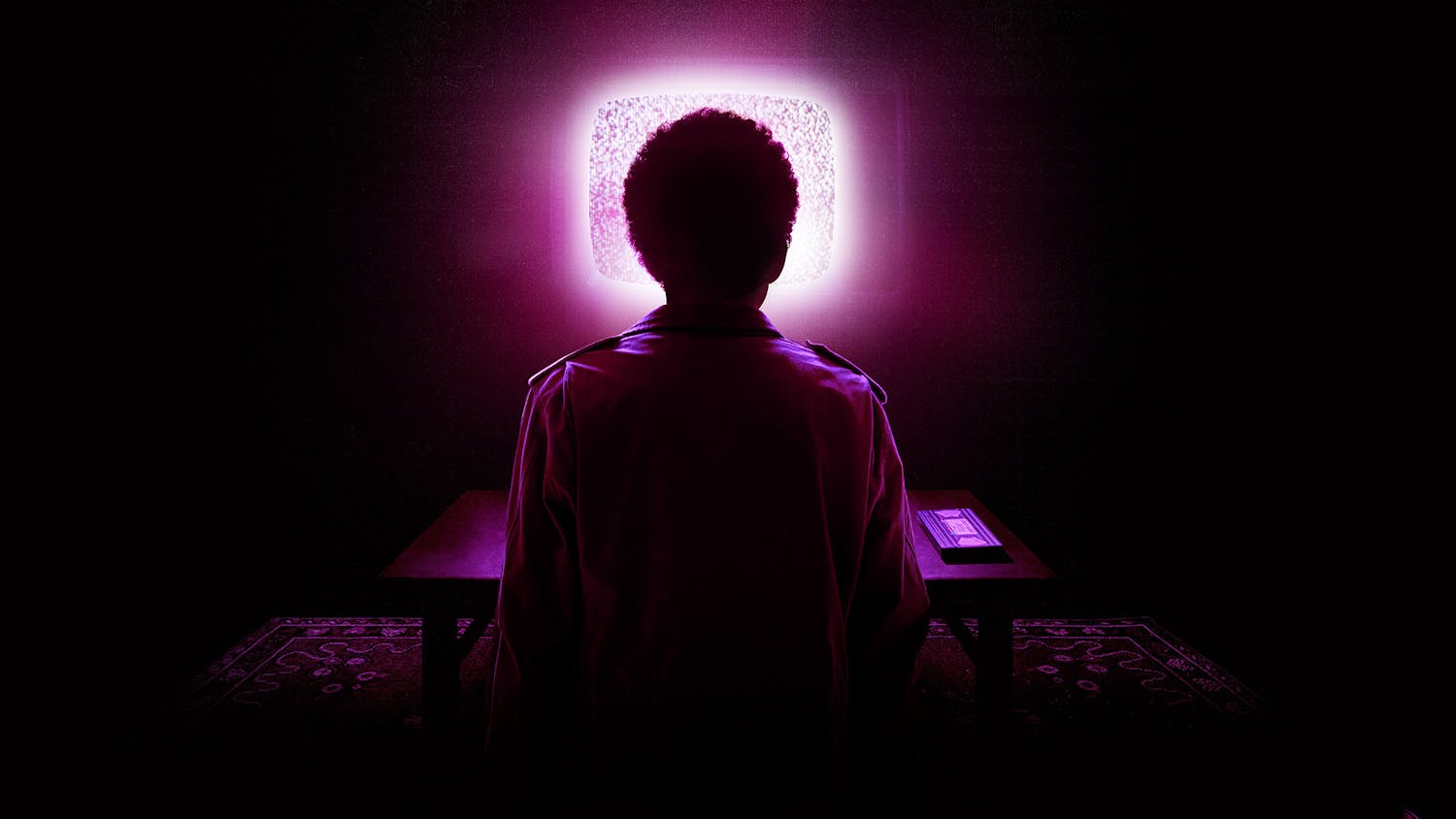Author: Abbie Beane
Last week's Winter Carnival kickoff event brimmed with fairy tales, juicy cuts of meat, tall cakes, African lore and fiery dancing.
As a prelude to the various festivities of the Cultural Arts Gala, held in the Center for the Arts (CFA) on Feb. 21, many Middlebury College students, faculty and staff attended the annual Winter Carnival dinner in Nelson Arena.
This year's theme, "Beauty and the Beast," a tribute to the Disney movie classic, boasted everything from roast beef to towers of cakes piled with fluffy layers of pink icing, all victims of the ravenous mouths of 2,500 insatiable college students.
Strings of lights hung like a luminous overhead jungle, and below proud animal sculptures arched their backs on the tables while workers dressed as characters from Disney's "Beauty and the Beast" walked about in costume.
Students gorged on tasty meats with their bare hands as a result of the ineffective plastic utensils. "I feel like a nomad," Matt Coons '04 said, picking up a slab of beef with his fingers. Eating selections of meat from "the beast" section of the dining event as well as feeling like primordial characters ourselves added to the amusement of the grand charade.
Immediately following this culinary experience, Lisa Sammet, a self-described "tale singer," provided one of the numerous performances held that evening as part of the Winter Carnival Cultural Arts Gala, which incorporated music and creative dramatics.
Entertaining a crowd of moderate size in the CFA Concert Hall, Sammet began with a piece playing the kalimba, a South African instrument made of various bits and pieces such as boards, boxes and hairclips.
In celebration of Black History Month and her own experiences in Africa, she wore a colored mask and a blue and white outfit called a bubu, the traditional garment worn by men in the Ivory Coast.
Sammet explained that she had taught English as a foreign language for two years as a Peace Corps volunteer in the Ivory Coast. She also served as a recruiter for the Peace Corps for two years in the United States.
Her performance, a tribute to her time in Africa, blended songs and chants from the Ivory Coast, classical African stories and frequent explanations of her African souvenirs, which still enchant her.
Among her stage decorations was a blue shirt, made with the dye of an indigo plant and fabric made of a flax plant, which was traced with a design in goat dung. Her most prized instruments included the calabash, a large African gourd often used as a tambourine and the balaphon, a type of West African xylophone made of wood.
Fighting a disruptive and restless crowd crawling with small children and parents trying to subdue them, Sammet sang a few songs and encouraged the audience to chant along with her.
One particular tune, which she learned from the children of the Ivory Coast after starting a music club there, was "Everybody Loves Saturday Night," composed of verses in English, French, Spanish, German and Portuguese, typifing the multilingual nation.
A man in the audience was quick to inform Sammet that the song was originally written in Bantu, a language of central and southern Africa. He left soon after this remark, though Sammet thanked him profusely for the knowledge he shared.
At the close of this extremely informal and interactive performance, Sammet graciously invited the audience to speak with her about her experiences and investigate her instruments.
At the same time, on the lower floor of the CFA, crimson waves of energy resonated off of the granite walls and wafted enticingly up to the second floor. It was Jeh Kula, an African Dance Troupe from Burlington, Vt., with a few members originally from Senegal and Guinea, who offered an amazing performance and instructional dance workshop.
The room barely afforded enough space to the electrically charged scores of people, who were dancing intensely in their bare feet. They were all captives of the infectious beats of the Ganba and Samba, the two types of drums used by Jeh Kula. It was difficult to believe that such an intricate sound could be born of only two instruments.
Walking in midway through the instructional dance workshop was analogous to entering someone's bedroom and catching them dancing wildly in their underwear, inspired by the freedom of their privacy.
It was as if their bodies were mere vessels of their spirits, bending and twisting in ways only possible after shedding the shell of social inhibition. The crowd clapped incessantly, laughing and smiling and gasping for breath despite the fact that they were sitting still.
The leader of the troupe, a man cloaked in shiny, tan African dress, then arranged the group into a circle and gave one person a piece of cloth — requiring that he dance for a minute inside the ring before passing the cloth to someone else.
It was refreshing to see the people find such release in their unrestricted movements, fully submissive to the intensity of the music and their own passions.
The atmosphere reeked of adrenaline and endorphins as the Troupe enticed the audience to expose their true nature to the public.
Later, a few of the professional dancers put on a choreographed performance to the beats of the Samba and the Ganba as well. The drums were played by four people in Jeh Kula towards the back of the stage.
With the powerful waves of energy carrying the audience through to the last beat, it would have been impossible to fall asleep. And if the hot mustard at the dinner did not penetrate your skin, this heated unveiling of the confident performer behind the mask of the everyday man could surely meet that challenge.
Carnival's Cultural Gala Flashes of African Lore
Comments



